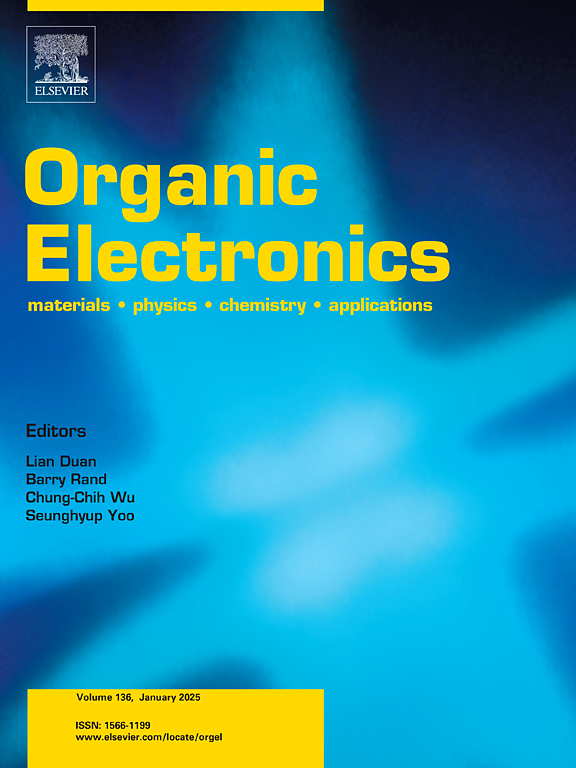Research on the multiplication mechanism of single-carrier transport-based multiplication-type organic photodetector
IF 2.6
4区 工程技术
Q3 MATERIALS SCIENCE, MULTIDISCIPLINARY
引用次数: 0
Abstract
Multiplication-type organic photodetectors exhibit advantages such as high gain, broad spectral response, flexibility, and low cost, making them promising candidates for applications in weak light detection, biomedical imaging, wearable devices, and optical communication. To explore the multiplication mechanism of single-carrier-transport-based multiplication-type organic photodetectors, this study has fabricated electron trap-type organic photodetectors with a structure of ITO/PEDOT: PSS/Active-layer/Al using the solution spin-coating method, and the active layers(ACL) were composed of binary blends of classical systems of P3HT:PC61BM (100:1, wt/wt), PBDB-T: ITIC (100:1, wt/wt), or PTB7:PC71BM (100:1, wt/wt). The absorption spectra of the active layers and the external quantum efficiency of the devices were measured, and the light intensity distribution and the distribution of photogenerated charge carriers in the devices were simulated and calculated. By comparing the absorption spectra of the active layers, the external quantum efficiency of the devices, and the distribution curve of photo-generated electrons near the Al electrode, it can be concluded that the multiplication effect in the single-carrier-transport-based multiplication-type organic photodetector is explained by the quantum tunneling injection of holes into the external circuit, which is induced by charge trapped by the interface trap near the aluminum electrode. This study provides valuable insights into the multiplication mechanism of multiplication-type organic photodetectors, offering a theoretical basis for the development and fabrication of high-performance multiplication-type organic photodetectors.

基于单载流子输运的倍增型有机光电探测器倍增机理研究
倍增型有机光电探测器具有高增益,广谱响应,灵活性和低成本等优点,使其成为弱光检测,生物医学成像,可穿戴设备和光通信应用的有希望的候选者。为了探索基于单载子传输的倍增型有机光电探测器的倍增机理,本研究采用溶液自旋镀膜方法制备了ITO/PEDOT: PSS/活性层/Al结构的电子阱型有机光电探测器,活性层(ACL)由P3HT:PC61BM (100:1, wt/wt)、PBDB-T: ITIC (100:1, wt/wt)或PTB7:PC71BM (100:1, wt/wt)等经典体系的二元共混组成。测量了器件有源层的吸收光谱和外量子效率,模拟计算了器件的光强分布和光生载流子分布。通过比较有源层的吸收光谱、器件的外量子效率以及铝电极附近光生电子的分布曲线,可以得出结论,基于单载流子输运的倍增型有机光电探测器的倍增效应是由铝电极附近界面阱捕获的电荷诱导的外电路中空穴的量子隧穿注入来解释的。本研究对倍增型有机光电探测器的倍增机理提供了有价值的见解,为高性能倍增型有机光电探测器的开发和制造提供了理论基础。
本文章由计算机程序翻译,如有差异,请以英文原文为准。
求助全文
约1分钟内获得全文
求助全文
来源期刊

Organic Electronics
工程技术-材料科学:综合
CiteScore
6.60
自引率
6.20%
发文量
238
审稿时长
44 days
期刊介绍:
Organic Electronics is a journal whose primary interdisciplinary focus is on materials and phenomena related to organic devices such as light emitting diodes, thin film transistors, photovoltaic cells, sensors, memories, etc.
Papers suitable for publication in this journal cover such topics as photoconductive and electronic properties of organic materials, thin film structures and characterization in the context of organic devices, charge and exciton transport, organic electronic and optoelectronic devices.
 求助内容:
求助内容: 应助结果提醒方式:
应助结果提醒方式:


